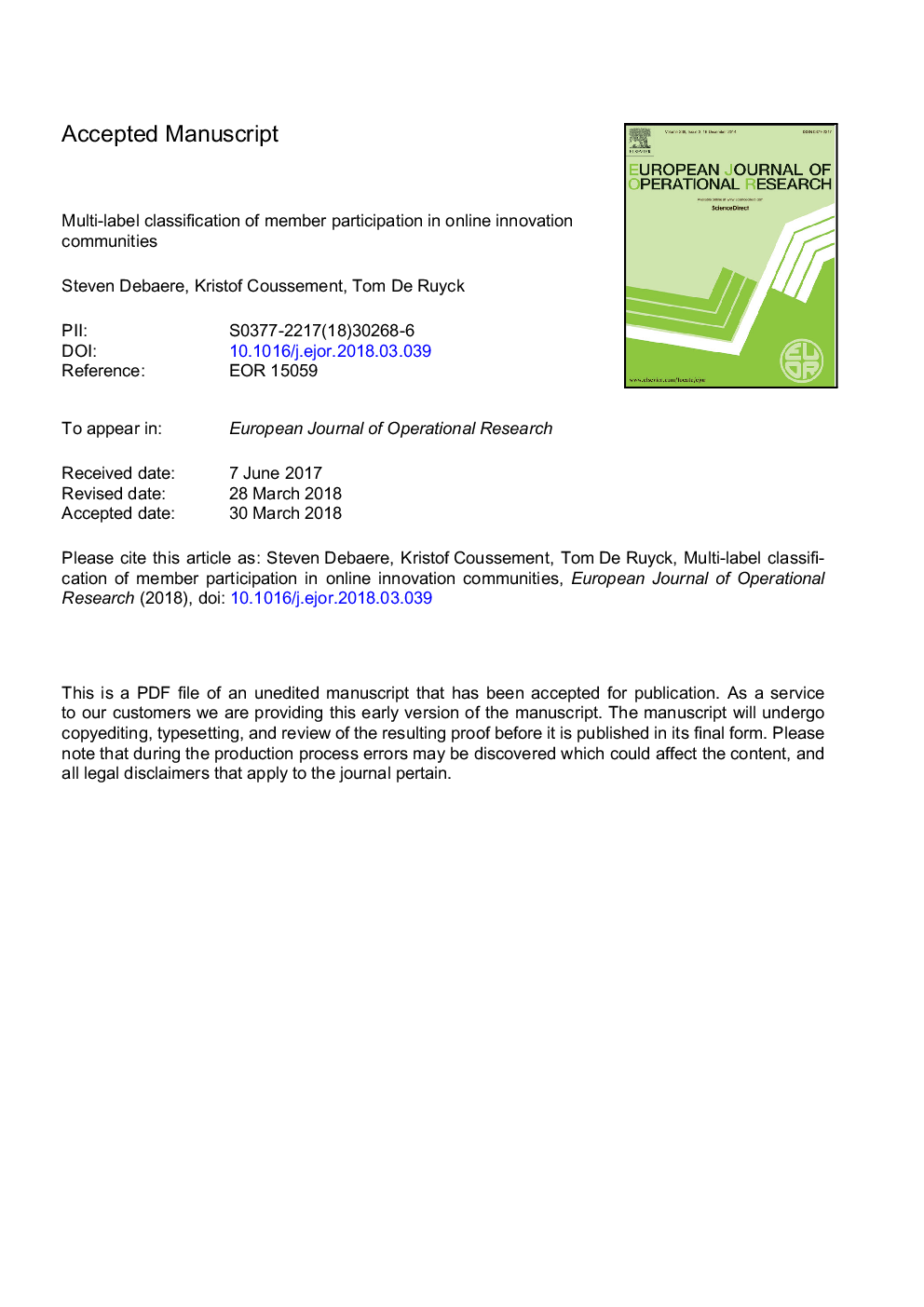| Article ID | Journal | Published Year | Pages | File Type |
|---|---|---|---|---|
| 6894605 | European Journal of Operational Research | 2018 | 34 Pages |
Abstract
Online innovation communities are defined as internet-based platforms for communication and exchange among customers interested in building innovations for a given product or technology. As firms recognize an online innovation community as a valuable resource for integrating external consumer knowledge into innovation processes, they increasingly ignore to build long-term interactions and collaborations. However, in the pursuit of a long-term community, moderators face enormous challenges, especially due to inferior member participation. Inferior member participation, whether in the form of inferior participation quantity, quality and/or emotionality, produces a community with minimal activity, unhelpful content and a nonconstructive atmosphere, respectively. Because members can be associated with multiple labels of inferior participation behavior simultaneously, the paradigm of multi-label (ML) classification methodology naturally emerges, which associates each member of interest with a set of labels instead of a single label as known in traditional classification problems. Using 1407 members of 7 real-life innovation communities, this study explores 10 state-of-the-art ML algorithms in an extensive experimental comparison to explore the benefit of ML classification methodology. We advance literature by demonstrating a novel application for ML classification adoption in the domain of online innovation communities, while comparing ML classifiers in the smallest possible scenario of 3 labels. The results indicate the effectiveness of the ML classification methodology for inferior member participation prediction, gives insights into ML classifiers' performance and discusses paths for future research.
Keywords
Related Topics
Physical Sciences and Engineering
Computer Science
Computer Science (General)
Authors
Steven Debaere, Kristof Coussement, Tom De Ruyck,
